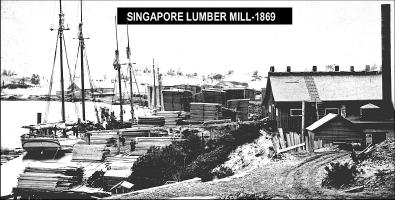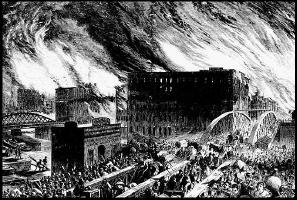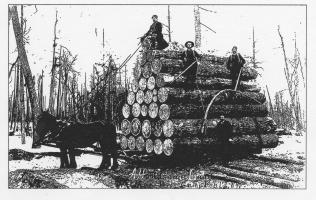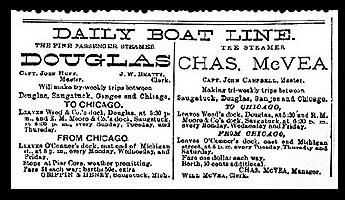|
CHICAGO IS OUR KIND OF TOWN
Chicago and
Saugatuck have been linked together since their coming of age in the early
1800’s. Back then when there were real bears in Chicago, a commercial
relationship developed between the two budding villages—one destined to
become a giant and the other a place that offered peace and serenity.
The opening of the Erie Canal in 1825 provided easy travel for the thousands
of immigrants who were now heading west to seek a better life. Many settled
in Chicago—which was by and large a swamp facing on Lake Michigan. A U.S.
Government surveyor described the location as uninhabitable in the early
1800’s.
But it did have a port that allowed ships to bring goods and materials; and
that’s when Saugatuck entered the picture in the mid 1800’s. Chicago was a
ready market for Michigan products—lumber, fresh fruit, flour, and tanned
hides. Saugatuck had become a major ship builder on the Great Lakes, and had
experienced masters and crews to man the ships, and shipping by boat was the
fastest and cheapest way to move products.
One of the first ships to provide regular passenger service to Chicago from
west Michigan, was the steamship Huron that started tri-weekly service to
Chicago in 1859. The sailing master of the Huron was Capt. Frederick
Pabst—more on him later.
Just when things were going so well between Chicago and Saugatuck, a
devastating tragedy struck Chicago in 1871 when a neighborhood fire ran amok
and burned Chicago to the ground. The legendary culprit in the Chicago fire
was Mrs. O’Leary’s cow—believed to have kicked over a lantern in the O’Leary
barn. Mrs. O’Leary swore on a bible that it wasn’t her cow, and a recent
investigation suggests that her neighbor, “Peg Leg” Sullivan started the
fire.
The Chicago Fire of 1871 is listed in the World Almanac as a disaster that
destroyed 17,000 buildings, 250 deaths, and a dollar loss of $196 million.
Tragically on this date, Oct. 8, there were two other devastating fires: A
forest fire in Peshtigo, Wisconsin that destroyed towns, thousands of acres,
and a tragic 1,182 deaths. Also on Oct. 8th, a raging fire in Holland,
Michigan destroyed 210 dwellings, 75 stores, 15 factories, 5 churches, and 3
hotels. October 8, 1871 was the “Katrina” of its day.
Saugatuck’s Singapore mills and ships worked round the clock to fill the
demand for lumber to rebuild Chicago. With vigor and an indomitable spirit,
Chicago built a bigger, better city that was awarded the honor of hosting
the Columbian Exposition—an honor won in competition with other major
American cities—Washington DC, St. Louis, and New York. Now Chicago has to
meet that challenge.
by Rob Carey
|




